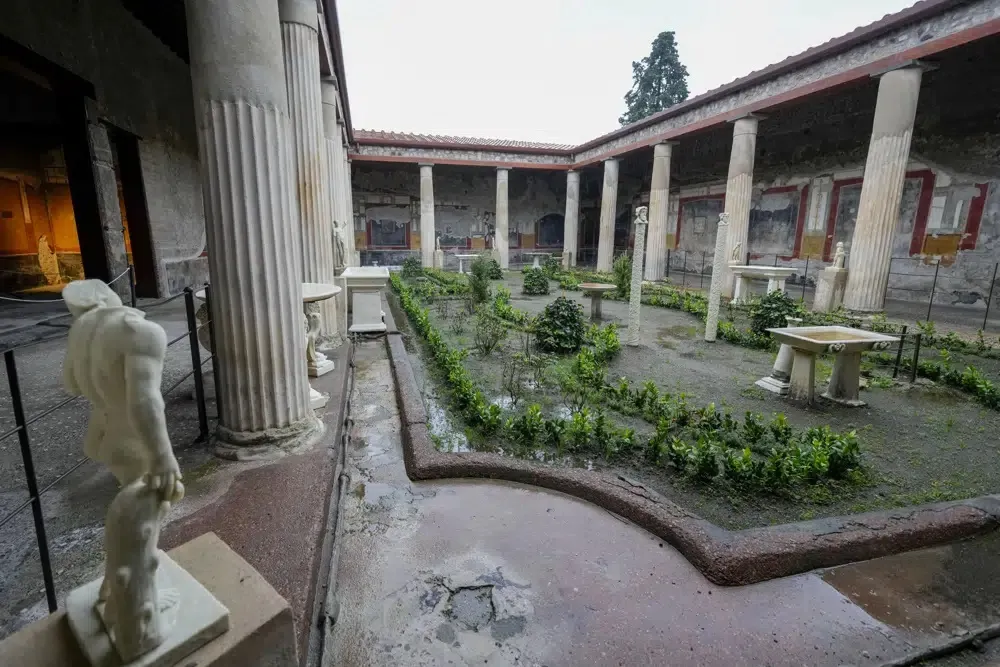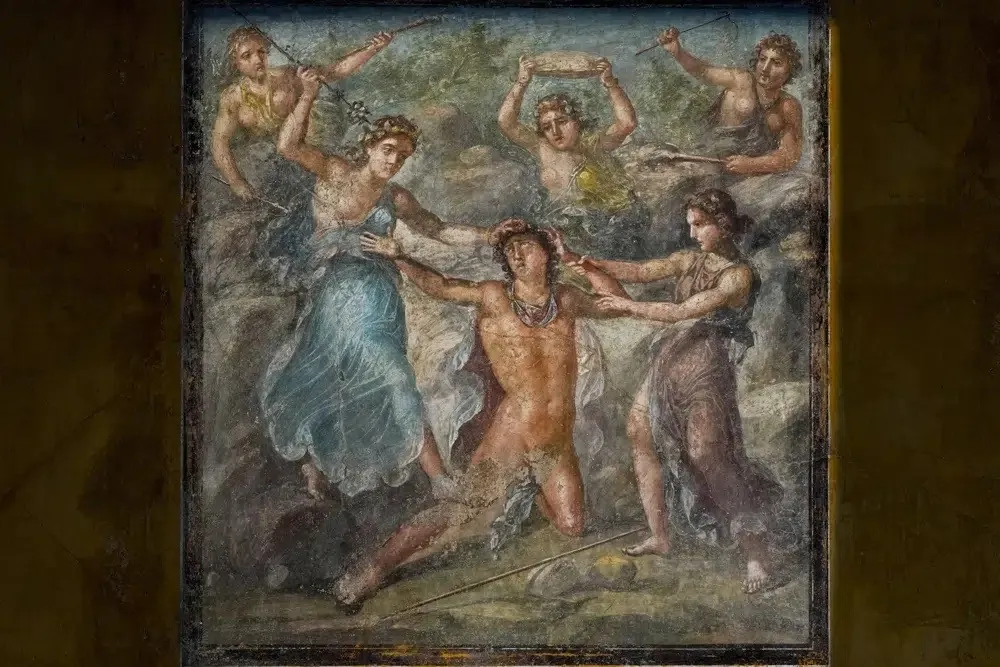Stepping into Pompeii, an ancient Roman city buried under the ashes of Mount Vesuvius, visitors not only witness magnificent architectural ruins but also have the opportunity to explore a priceless art treasure: vibrant frescoes. Among the myriad of surviving structures, the House of Vettii (Domus Vettiorum), recently reopened after two decades of restoration, stands out as a gem. Here, frescoes are not merely decorations but also keys to deciphering the culture and spiritual life of ancient Romans.
Ancient Roman Frescoes: Windows to a Civilization’s Soul
Frescoes, or wall paintings, were a prevalent art form in ancient Roman culture. More than just home decorations, frescoes embody profound cultural, historical, and artistic values, authentically reflecting the daily life, beliefs, and worldview of the Romans. Roman fresco techniques reached a high level of sophistication, featuring vibrant colors, harmonious compositions, and diverse themes, from everyday life scenes and customs to mythological and historical narratives.
In Pompeii and surrounding areas, frescoes are found throughout architectural structures, from luxurious villas of the nobility to ordinary houses, from public buildings like bathhouses and temples to taverns and shops. The ubiquity of frescoes demonstrates the significant role of this art form in Roman cultural life. They not only beautified living spaces but also conveyed messages, told stories, and showcased social status.
House of Vettii: A Living Fresco Museum in Pompeii
The House of Vettii, owned by two brothers, former slaves who became wealthy wine merchants, Aulus Vettius Conviva and Aulus Vettius Restitutus, is one of Pompeii’s most iconic architectural landmarks. This house impresses not only with its luxurious architecture, harmoniously blending living space and nature, but also with its incredibly rich and exquisite collection of frescoes. After years of restoration, the House of Vettii has reopened, offering visitors the chance to admire these stunning frescoes and discover the cultural stories hidden within them.

Entering the House of Vettii is like stepping into a living museum of fresco art. Wall paintings cover almost every space in the house, from living rooms, dining rooms, bedrooms to gardens and hallways. Each fresco is a unique work of art, showcasing the talent and creativity of ancient Roman artists. Simultaneously, they serve as valuable historical materials, helping us gain deeper insights into Roman culture.
Decoding Roman Culture Through Frescoes at the House of Vettii
To understand ancient Roman culture through the frescoes at the House of Vettii, we can focus on several key aspects:
1. Roman Mythology and Religion
A significant number of frescoes at the House of Vettii draw themes from Greek and Roman mythology. Stories of gods, demigods, heroes, and monsters are vividly recreated on the house walls, demonstrating the profound influence of religion and mythology in the spiritual life of the Romans. For example, a famous fresco in the Pentheus Room depicts the infant Hercules strangling two snakes sent by the goddess Hera. This painting not only recounts a mythological tale but may also symbolize strength, resilience, and the ability to overcome difficulties, qualities valued by the Romans.

Additionally, in the “lararium” area, where the Lares, guardian deities of the Roman household, were worshipped, we also find frescoes related to indigenous beliefs. This indicates the blending of Greek and Roman religious elements in the religious culture of Pompeii’s inhabitants.
2. Daily Life and Customs
Besides mythological themes, frescoes at the House of Vettii also authentically reflect the daily life and customs of the Romans. Paintings depict scenes of family life, banquets, festivals, commercial activities, and entertainment, helping us better visualize the lives of Pompeii’s residents before the volcanic disaster.
For instance, in the “Room of the Cupids,” frescoes depict the little love gods Cupid playing, engaging in everyday activities like gardening, chariot racing, and hunting, evoking a cheerful, optimistic, and life-loving atmosphere of the Romans. These paintings also reveal the Roman appreciation for beauty, enjoyment of life, and a liberal, open-minded spirit.
3. Aesthetic Taste and Social Status
The style and themes of the frescoes at the House of Vettii also reflect the aesthetic taste and social status of the homeowners. The choice of frescoes with Greek mythological themes, refined painting techniques, and vibrant colors indicates the wealth, erudition, and status of the owners. The Vettii brothers, rising from slave status to become wealthy merchants, used fresco art to assert their new social standing.
The frescoes decorating the dining room, living rooms, and other areas of the house also showcase the refined aesthetic taste and love for natural beauty of the Romans. The harmonious combination of architecture, frescoes, and green spaces in the House of Vettii is a testament to the luxurious and sophisticated lifestyle of the Roman upper class.
A Journey to Discover Roman Culture Through Frescoes
Exploring ancient Roman culture through the frescoes at the House of Vettii is a fascinating and meaningful journey. Each wall painting is not just a work of art but also a story, a cultural fragment, helping us deepen our understanding of a great civilization.

When admiring the frescoes at the House of Vettii, take time to carefully observe each detail, from composition and colors to themes and characters. Place yourself in the historical context, imagine the lives of ancient Romans, and feel the cultural messages hidden in each brushstroke. You are sure to have profound and memorable experiences exploring ancient Roman culture.
Conclusion
The House of Vettii is not only an important archaeological site but also a priceless cultural treasure, preserving stunning frescoes that authentically and vividly reflect ancient Roman culture. By studying and deciphering these frescoes, we can transcend space and time, connect with the past, and discover the enduring cultural values of one of humanity’s greatest civilizations. A journey to discover Roman culture through frescoes at the House of Vettii is sure to be a memorable and meaningful cultural travel experience for anyone who loves history and art.